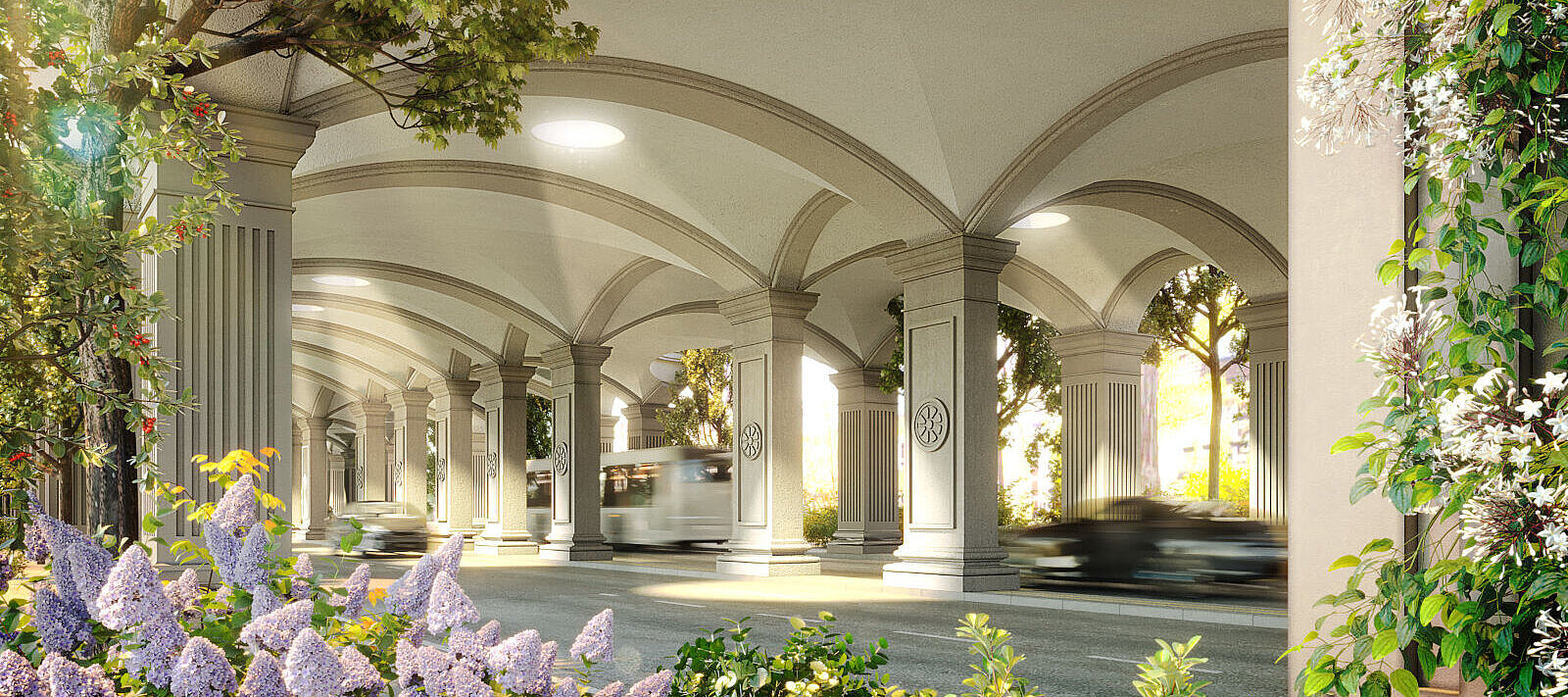
„Old New Territory Bridges“ around the world can ensure that the cities of tomorrow do not just consist of gigantic glass buildings in the middle of huge green open spaces
Bridges above large grey motorways provide the opportunity to complement gigantic visions of the future for our cities with bridge-streets in which local traditional architecture is revived. The living environment on these „Old New Territory Bridges“ is on the one hand characterised by humane and artistic tradition, and on the other hand technically ultra-modern and in line with the latest sustainability standards. At the same time, the bridges can offer solutions for the environmentally friendly orientation of a city in terms of energy, water and transport. Even though the focus and orientation in the use of the bridge concept is different for each city, the principle remains the same: To implement humane second-level solutions in an existing city.
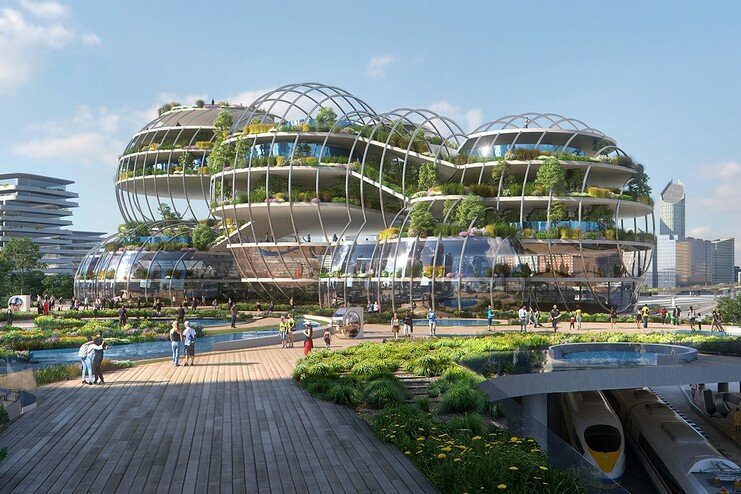
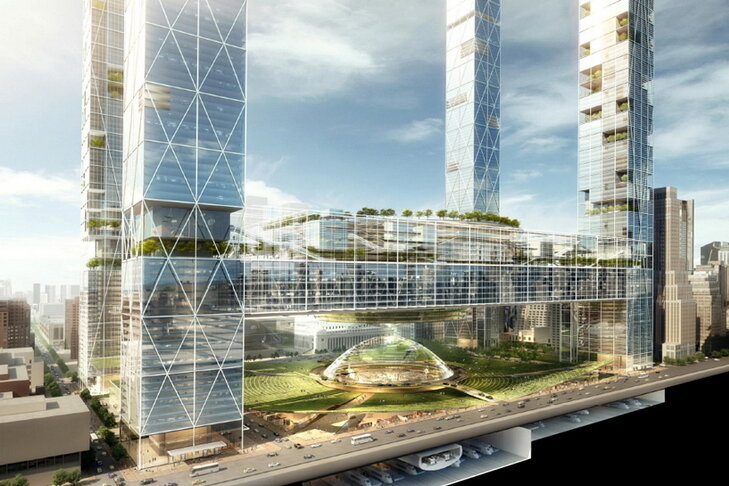
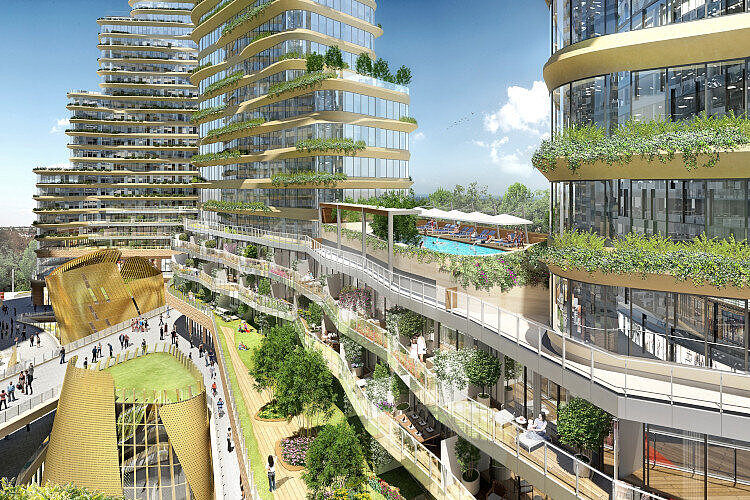
Most architects imagine the city of the future to be large buildings made of glass and steel
The buildings in modern urban planning are on the one hand huge and can accommodate thousands of people, but on the other hand a lot of space is left between the individual buildings, so that in total not the maximum building space is created that such an area would allow. Traditional architecture, on the other hand, follows exactly the opposite principle: The buildings have only two to three floors and are built at smaller distances from each other, surrounded by small gardens or city greenery, divided by narrow streets and alleys. Due to the low storey height, their total building space is naturally significantly lower than that of the towering vision buildings, despite denser development, but humane, walkable neighborhoods are being created to make up for it.



In the latest designs by city planners and star architects, the gigantic buildings are surrounded or even covered by greenery, so that the areas as a whole appear attractive, but do not necessarily appeal to everyone
What's more, such thoroughly fascinating urban districts can only be created around mature cities; in the existing cities themselves, on the other hand, there is no room for them. And for reasons of sustainability, we will not remove the entire building landscape of our cities just to implement new urban planning concepts, however green they may be. With the bridge concept, modern techniques and innovations can be brought into the existing cities, and at the same time the cities can be enriched with traditional as well as humane modern architecture. Thus, for people who prefer to live in buildings with few floors, new modern living space is created that is traditional only in terms of structure and aesthetics, but is state-of-the-art in terms of technology.
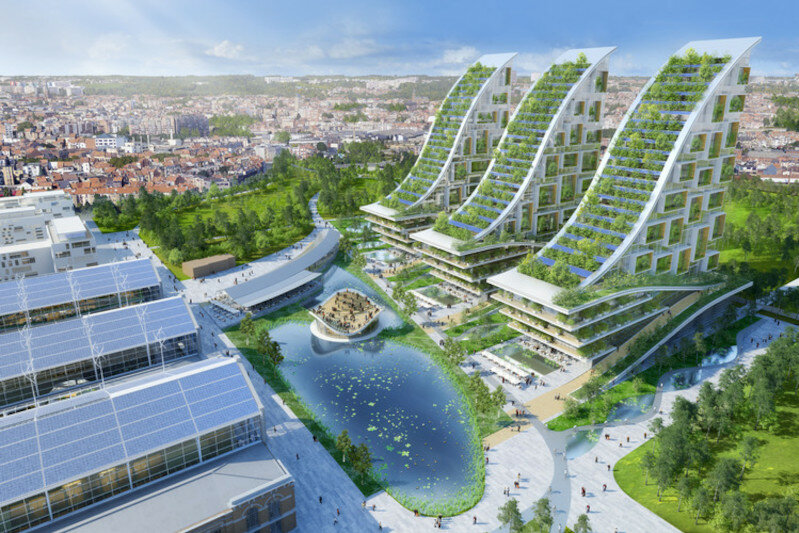
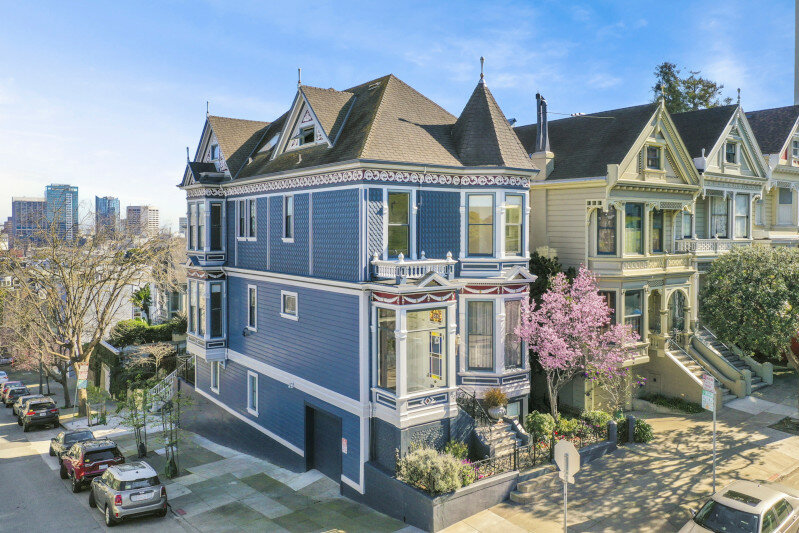
Solutions for the future must be realised in our existing cities - because we cannot tear them all down in order to make room for visions
Moreover, simply greening buildings is no guarantee that people will feel comfortable in them
When buildings are extremely large, they run the risk of seeming impersonal to people, however planted with green they may be. The feeling of security tends to come with smaller units and will not be forced by greenery. Accordingly, it will be an architectural challenge on bridges worldwide to apply traditional architecture to multi-story buildings. Traditional large structures tend to have only three to four full stories. On the bridges, however, buildings with up to six or seven floors are possible - a potential that should definitely be exploited to create living space.


The "green solutions" for the city of the future also need to be further developed, because at present a great deal of plastic is still used in facade greening, which carries the risk of microplastics being secreted with rainwater over time
The bridge concept can be adapted to the needs of each metropolis - but some principles of the concept apply equally to all cities
1.The architecture should be as humane as possible: Not only gigantic mass buildings of glass and steel with huge windy open spaces in between, but also small-scale, varied architecture, arranged in alleys for strollers, should come into play.
2.The architecture of residential buildings should always be geared exclusively to the people who will inhabit them or haveto live in them (unlike the architecture of libraries, museums, commercial buildings, terminals, etc., which can also be less humane or even uncomfortable, but spectacular in the sense of star architects and builders who want to immortalize themselves, because unlike residential buildings, people do not have to spend their lives in these buildings if they don't want to).
3.The architecture on the bridges should accordingly consist of modern houses on the one hand and incorporate traditional local architecture on the other, as this is mostly made of sustainable building materials of the region, is climatically adapted and many people love their traditional architecture and the associated handicrafts and like to live in such houses.
4.In addition, all of the country's innovative construction methods were to be represented on the bridges in order to create a kind of giant research laboratory for sustainable construction.
5.Not only should as much urban greenery as possible be planted around the new bridge neighborhoods, but greening of the bridges’ buildings should always also be a focus of bridge design. For facade greening, ground-based greening is preferable in order to conserve resources and keep the carbon footprint low, and for irrigation systems, a water-saving, low-plastic underground system should be chosen whenever possible.
6.In all quarters, the potential for photovoltaics should be exploited, whereby visible or prominent areas should be equipped with inconspicuous or aesthetically pleasing PV modules so as not to detract from the ambience.
7.When planning PV areas in new neighbourhoods, it must be checked whether too much conventional black PV at one location can lead to heat island effects. If this effect is to be feared, a switch should be made to white photovoltaics.
Humane architecture: It doesn't always have to be old buildings. But whether traditional or modern - for residential purposes, people usually love buildings that have a manageable size
With high-rise buildings, the view is cool: But above a certain height, windows no longer open wide, and it's usually too windy to sit on balconies and terraces.

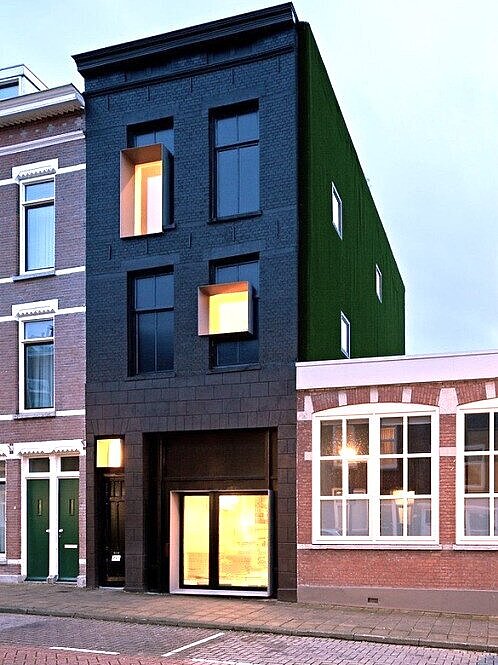

Tradition and arts and crafts are important additions to mega-smart cities of the future
Arts and crafts give a city a special flair. At the same time, it creates identity and can also give newcomers a sense of home.
If people around the world allow architects to stop constructing buildings in traditional architecture with traditional craftsmen at all, then the knowledge and skills for such construction methods will be lost.
Modernity and tradition are often seen as opposites. That this is not necessarily the case is shown by cities such as Singapore, where neighbourhoods with colourful, varied and artisan buildings stand surrounded by impressive skyscrapers.
People all over the world love artfully decorated buildings and objects. At the same time, there are (still) craftsmen who are capable of building such things. There is therefore no obvious reason why we should not start to create such fascinating buildings again.


Often the price of craftsmanship is used as an excuse for not venturing into traditional construction, but modern buildings that are not prefabricated, but are a little more customized, are usually just as expensive or even more expensive
There are lavishly designed modern buildings that can certainly hold their own in terms of artistic ambition with old buildings designed with artistic craftsmanship, whether as apartment buildings or as spectacular solitary buildings with special uses.
However, in terms of cost, such buildings are also in no way inferior to old buildings. In contrast to buildings based on traditional architecture with craftsmanship, though, an annoying disadvantage here is that there is often no experience with the implementation of modern ideas, and thus no experience with how much the building will cost and how long it will last. With traditional buildings, on the other hand, it is much easier to know how much they will cost and moreover: how long they will last - because old buildings have proven by their very existence that their construction methods are long-lasting and therefore sustainable.


In particular, the glass facades of modern buildings are usually just as expensive as traditional facades with stonemasonry - but, unfortunately, usually not as sustainable
Glass facades are notoriously not as sustainable as traditional façades in terms of energy, whether it is for heating or cooling the building. But they also cannot compete with the sustainability of traditional buildings due to their shorter lifespan.
The greatest advantage of a glass façade is potentially the light that can penetrate the interior of a building. However, if a master academy for the preservation and innovation of European arts and crafts is founded in the course of building bridges in a city, as is planned for Frankfurt, then a challenge for that academy may be to use traditional design language to develop facades that also have huge window areas but still have a classical style. Because in Northern Europe this is extremely important since sunlight is rare, whereas in hotter countries normal windows in classical facades make more sense in terms of energy.
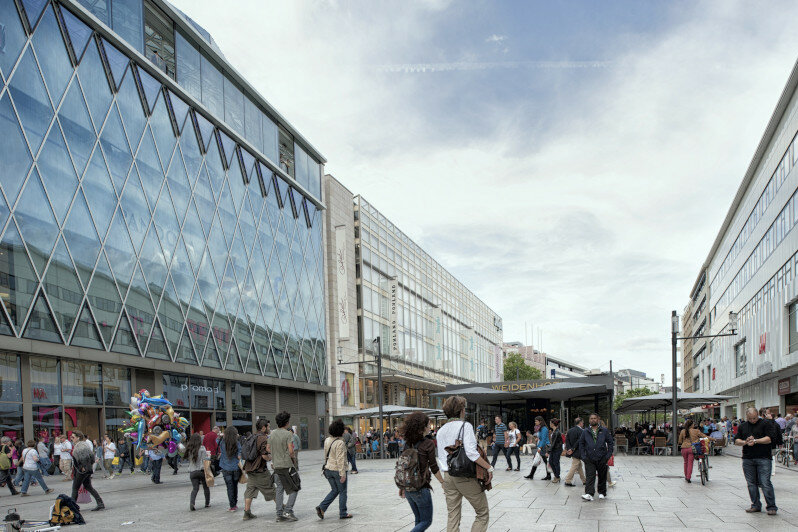

Transport: The transport of the future should be energy-efficient and offer an adequate substitute for individual transport
Often, visions of the city of the future include drones or other unspecified aerial vehicles that are supposed to act like cars. The principle has two inherent disadvantages that have not yet been technically solved: First, it takes an extremely large amount of energy to first lift people off the ground and then travel a distance (without acceleration as with a plane); second, the process of lifting a cargo with the weight of a human through rotors is very noisy, which can be observed with helicopters. Only a zeppelin technology, which works with gases, would be -quietly hovering- imaginable.
A second idea for means of transport in the city of the future aims at extremely long modern trains. Complementary to other, smaller means of transport, this is undoubtedly an interesting option, but it cannot satisfy people's need to be able to get off where they want to go, as individually as possible along the routes that are bound to the road. And especially in regions with extreme climates, it is inconvenient if stations are located at very long distances from each other and people have to walk long distances forwards or backwards after getting off.
The autonomously driving traffic on the bridges solves both: it "floats„ quietly right through the city, without wasting energy, and the vehicles, although they are bound to the road, come "on demand", and especially the cars, can transport people to any point on the bridges.


Photovoltaics: PV should be installed in each city, differentiated according to the area
It can be efficient to produce energy decentrally where it is also consumed, i.e. everywhere in the city. The bridges can collect this electricity and transport it to where it is needed with the help of control systems, and electric cars can refill at the bridge pillars. But photovoltaic does not fit on every facade (e.g. it does not fit on old buildings with decorative facades); moreover, not always only black PV should be installed, but (to avoid heat islands and to increase acceptance among the population) white or aesthetically pleasing PV should be applied, as well.

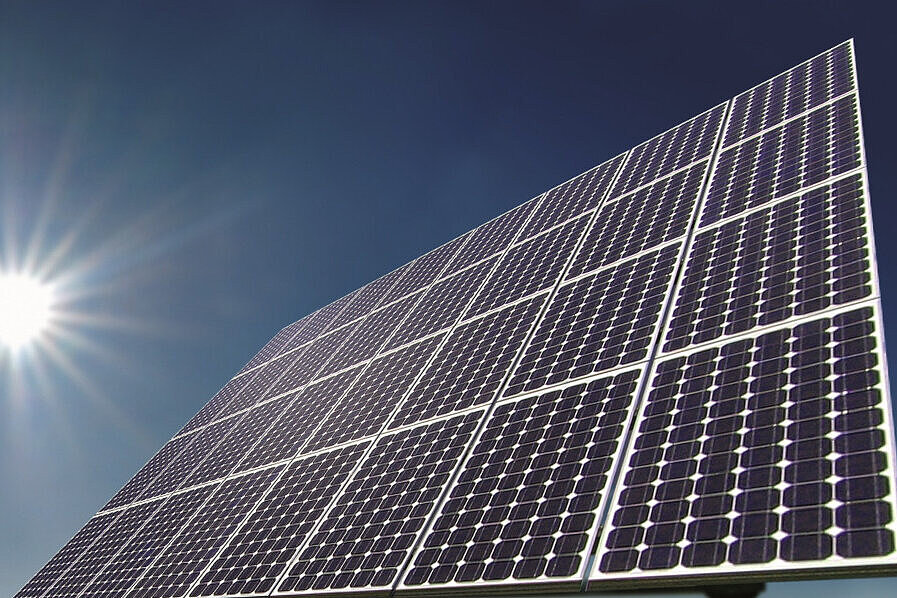


Conclusion: "Old New Territory Bridges" can help worldwide to transform today's cities into humane cities of the future
Compared to other visions of "the city of the future", the bridge concept has the advantage that it can implement modern technology and humane architectural design in the middle of existing buildings and not outside in new development areas or by demolishing existing urban structures. With „Old New Territory Bridges“, you can take the grown city districts with you on the way into the future.
The bridges realize on a second level everything that cannot be introduced on the first level. In doing so, they use the space above motorways, which is in any case lost space for people's lives, but passes right through their living spaces. Everything that is realized in terms of concepts on top of the bridges can successively spread along them into the rest of the city.
In addition, the bridges represent a mega-routing structure through areas where it is not possible to tear up kilometres of road in order to lay pipelines: by running through the city as a green shading lung, collecting water, distributing it and transporting it to storage locations or acting as a modern network of pipelines for decentralised volatile energy.
They solve numerous problems on the second level in a transdisciplinary way, which otherwise cannot be solved in in the existing building landscapes of our cities


